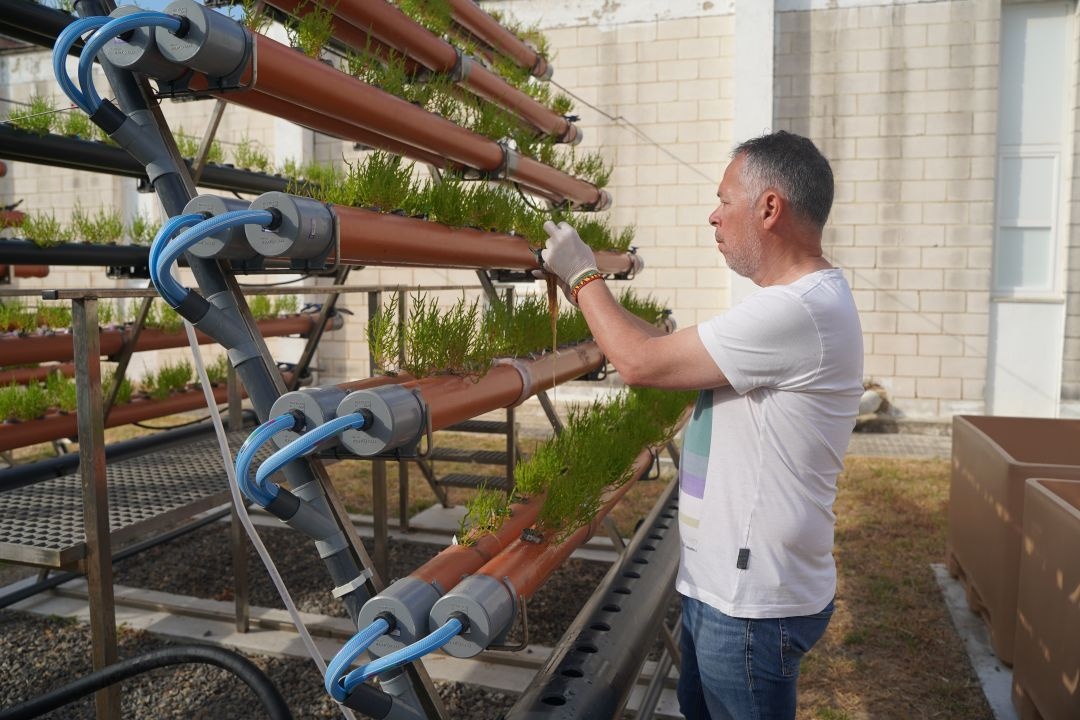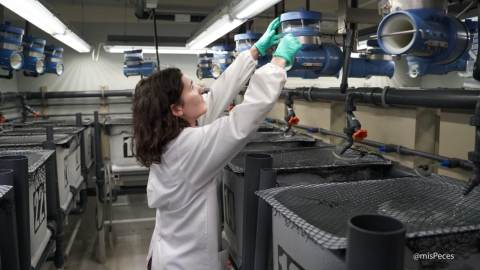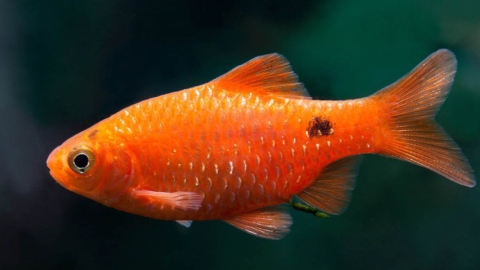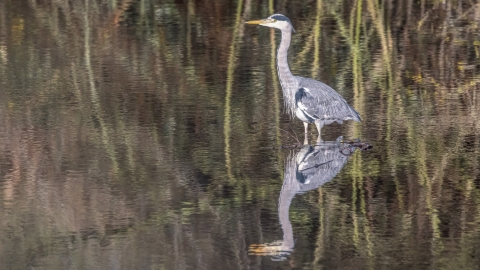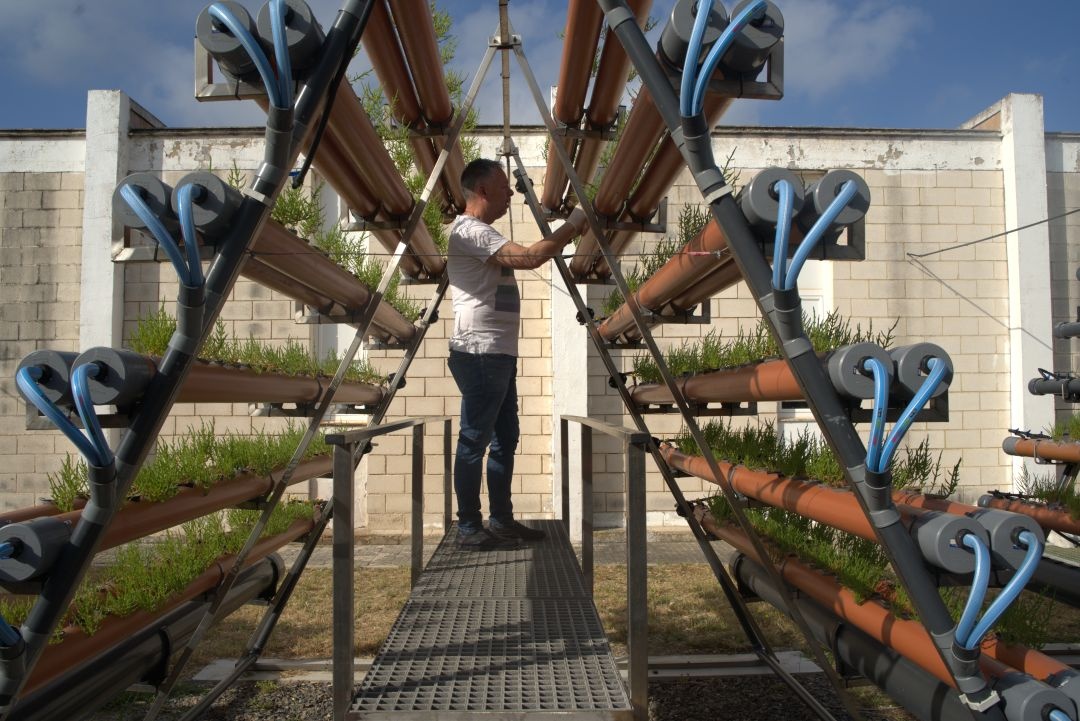
Technological innovation and environmental sustainability come together in AquaInnova, a pioneering initiative backed by the European Maritime, Fisheries and Aquaculture Fund (EMFAF). The project sets out to redefine conventional aquaculture models by shifting towards circular and ecologically intensive systems.
As explained by Manuel Manchado, a researcher at IFAPA (Andalusian Institute of Agricultural and Fisheries Research and Training) and project coordinator, in an interview with misPeces.
“We’re pursuing three main goals: to innovate in the production of halophytic plant species alongside fish; to implement and refine techniques for generating genetic resources; and to make advances in the breeding of high-value species such as sole.”
In addition, Manchado highlights that the research team is exploring the integration of shrimp into these systems-a response to growing demand from the industry.
AquaInnova is also focused on adding value to halophytic plant species such as Sarcocornia fruticose, Salicornia ramosissima and Salicornia perennis. These salt-tolerant plants offer considerable potential for both food and biotech applications and are grown under carefully controlled pH and salinity conditions to maximise productivity.
“We’re conducting several experiments to showcase the usefulness of both perennial and annual halophytes,” explain Manchado, who also emphasizes the use of molecular markers to distinguish between varieties that are hard to identify based on appearance alone.
“Our colleagues are analysing polyphenol profiles to assess which species holds the greatest biotechnological promise, while we are looking at which would be most variable from an agronomic perspective.”
Beyond their nutritional value, these plants function as natural biofilters, helping to enhance water quality within aquaculture systems thanks to their extensive root structures.
“We’re able to improve water quality simply through the filtering capacity of these root systems,” Manchado points out.
